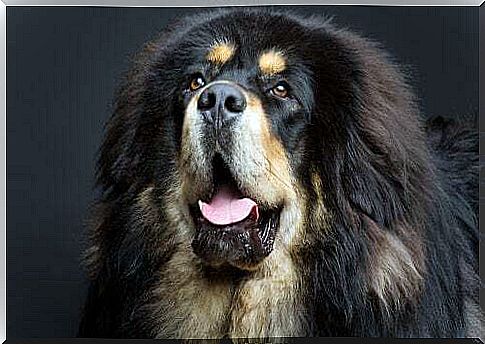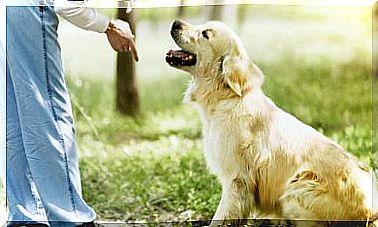Why Do Large Dogs Live Less?

Recent studies suggest that large dogs suffer accelerated aging compared to that of their small breed peers. In this article, we will look at why large dogs live less.
A dog is considered large if its size is excessive in both height and volume, with exceptions such as that of the Irish wolfhound, which is large but very thin. These dogs are characterized by a weight of more than 40 kilograms and an average life expectancy of seven or eight years.
Apparently, looking at the length of mammalian life cycles, one might think that large dogs should live longer. In fact, while the longevity of whales or elephants is well known, with specimens that can live over a hundred years, a mouse barely lives two years.
However, if the analysis focuses on a specific mammal species, the opposite trend will be seen, with small specimens living longer. Why do large dogs live less?
Premature aging of large dogs
Starting from the fact that a medium-sized dog has a life expectancy of around 13 years, a group of researchers from the German University of Göttingen tried to explain the low life expectancy of a German Mastiff or Bulldog.

To do this, data provided by veterinary hospitals were analyzed: over 56,000 dogs of 74 different breeds were evaluated. The conclusions, published in the scientific journal American Naturalist , revolved around accelerated aging.
So when a large dog dies at just seven, it’s not that it died young, but by that age it had already reached old age.
Furthermore, the effect of body mass in reducing life expectancy was also recognized through the statistical calculation. Therefore, the researchers said that for every two kilograms of mass a dog lives one month less.
However, in the interpretation of the German study, it can be seen that their data are based on an analysis based on observation, but that does not explain the physiological reason for such aging. This aspect was addressed by a study conducted by the University of Science and Technology of Trondheim, Norway.
Longevity at the chromosomal level
The Norwegian team, led by biologist Thor Harald Ringsby, published the results in the scientific journal Proceedings of the Royal Society , focusing on the genetic factor at the chromosomal level.

Specifically, the researchers analyzed the telomere length of large dogs. These telomeres are the most distal portions of the chromosomes and have the particularity of shrinking over time during cell divisions.
The size of these regions has been shown to be very small in situations of aging or diseases such as cancer.
The experiment concluded that the metabolism of large dogs and their high demand for energy to grow lead to rapid cell division, with corresponding telomeric deterioration.
Thus, the first indication of aging in large dogs occurs at the cellular level. This happens because when telomeres reach a critical size, the ability of cells to divide is impaired and they can even die.
Although genetic deterioration occurs naturally and there is still no way to alter it, owners of large dogs can contribute. Adopting healthy lifestyle habits, with the proper diet, affection and necessary exercise are factors that always tend to improve the quality and life expectancy of the dog.









